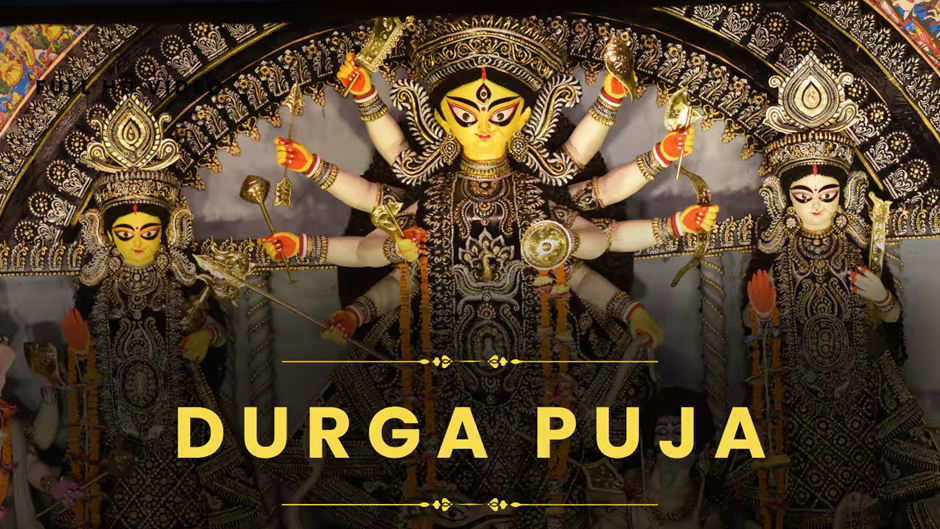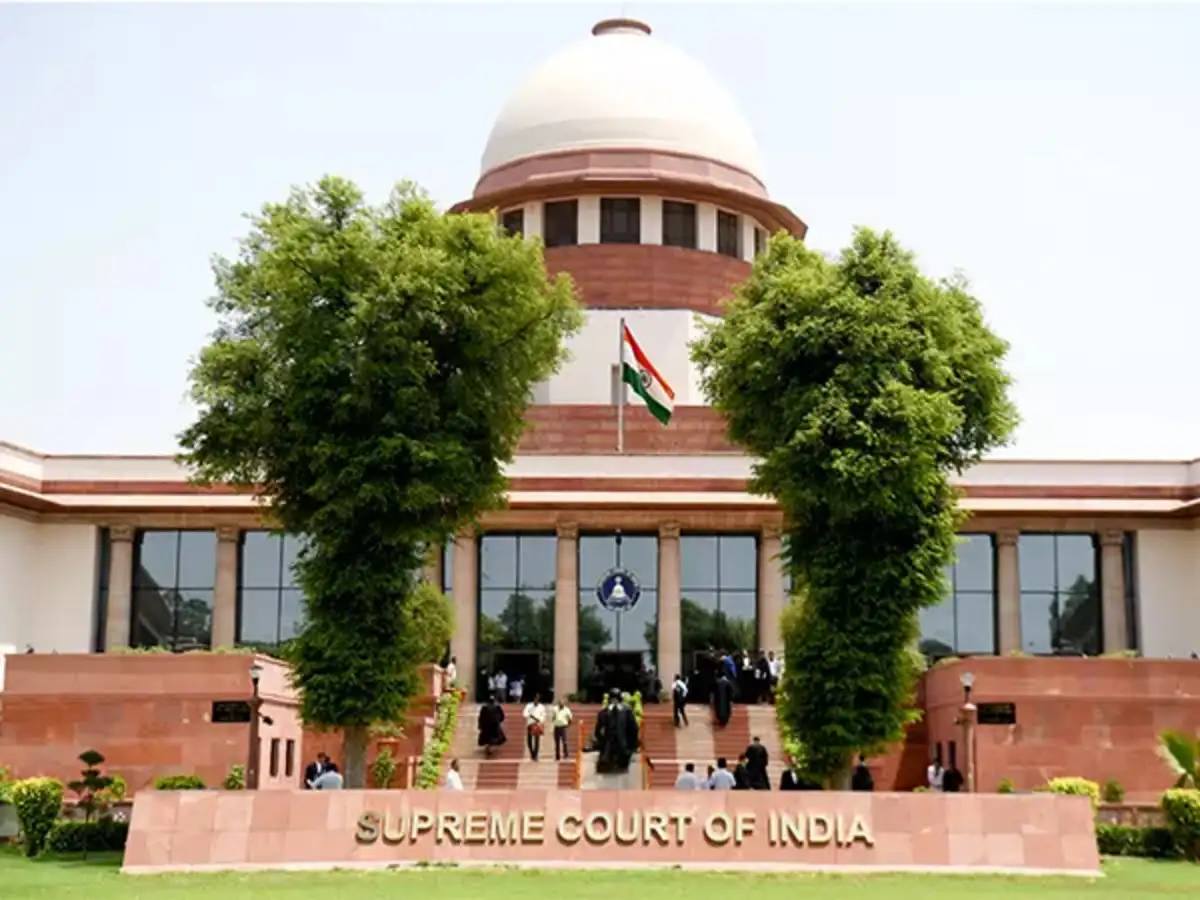- Courses
- GS Full Course 1 Year
- GS Full Course 2 Year
- GS Full Course 3 Year
- GS Full Course Till Selection
- MEP (Mains Enrichment Programme) Data, Facts
- Essay Target – 150+ Marks
- Online Program
- GS Recorded Course
- NCERT- First Ladder
- Polity
- Geography
- Economy
- Ancient, Medieval and Art & Culture AMAC
- Modern India, Post Independence & World History
- Environment
- Governance
- Science & Technology
- International Relations and Internal Security
- Disaster Management
- Ethics
- Current Affairs
- Indian Society and Social Issue
- CSAT
- 5 LAYERED ARJUNA Mentorship
- Public Administration Optional
- ABOUT US
- OUR TOPPERS
- TEST SERIES
- FREE STUDY MATERIAL
- VIDEOS
- CONTACT US
How Durga Puja Emerged in British-Ruled Bengal
How Durga Puja Emerged in British-Ruled Bengal

Durga Puja, a festival celebrating the homecoming of Goddess Durga, is as much about religious devotion as it is about communal celebration. Its evolution in colonial Bengal reflects significant social, economic, and political changes.
- Durga Puja is celebrated over five days, starting with Shashthi and concluding with Vijayadashami.
- In 2024, the festival will be observed from October 8 to October 13, with each day holding a unique importance.
|
Day |
Date |
Weekday |
Tithi |
Rituals & Events |
|
1 |
8th October 2024 |
Tuesday |
Panchami |
Bilva Nimantran |
|
2 |
9th October 2024 |
Wednesday |
Shashthi |
Kalparambha |
|
3 |
10th October 2024 |
Thursday |
Saptami |
Durga Saptami |
|
4 |
11th October 2024 |
Friday |
Ashtami |
Durga Ashtami, Maha Navami |
|
5 |
12th October 2024 |
Saturday |
Nabami |
Maha Navami, Vijayadashami |
|
6 |
13th October 2024 |
Sunday |
Dashami |
Vijayadashami |
The Colonial Backdrop: Robert Clive and the Myth:
One of the most popular legends surrounding Durga Puja's origins is tied to Robert Clive, the British officer who played a pivotal role in establishing British rule in India after the Battle of Plassey in 1757.
- Following his victory over Nawab Siraj ud Daula, Clive sought to express gratitude for his newfound wealth and fortune through a grand ceremony in Calcutta.
- However, with the Nawab having destroyed the city’s only church, Clive turned to Nabakishan Deb, a wealthy Bengali who purportedly invited him to perform a Durga Puja at his mansion.

- Though this story is widely circulated, it lacks historical substantiation.
- No evidence exists to confirm that Deb and Clive had a close relationship prior to 1757 or that the Puja actually occurred that year.
- Nevertheless, the narrative symbolizes the intersection of colonial power and local tradition, marking the beginnings of Durga Puja as a spectacle shaped by the relationships between Bengali zamindars (landowners) and the East India Company.
Rise of a New Class: Zamindars and Merchants:
- The East India Company’s rule facilitated profound social changes, including the emergence of a powerful class of local collaborators.
- The zamindars, who had gained prominence following the decline of the Mughal Empire, became essential intermediaries between the Company and the local populace.
- The Permanent Settlement Act of 1793 solidified their economic and social status.
- Alongside the zamindars, a new class of wealthy Bengali merchants flourished, particularly in Calcutta.
- The economic opportunities presented by British trade allowed families like the Tagores and Mullicks to amass significant wealth.
- For these affluent families, Durga Puja transformed into an occasion for showcasing their riches, rather than merely a religious observance.
- Historian Tapan Raychaudhuri notes that “conspicuous consumption” rather than devotion was a central theme during these celebrations.
- The competition among families to host the most extravagant Pujas led to lavish displays involving gold-adorned idols and entertainment from renowned performers.
A Shift Towards Nationalism
- By the late 19th century, a wave of nationalism began to permeate Bengali society, especially among the educated elite.
- Bankim Chandra Chatterjee’s novel Ananda Math, published in 1882, popularized the concept of the nation as a mother, intertwining the worship of Goddess Durga with nationalist sentiment.
- As the Goddess became synonymous with the struggle against foreign rule, Durga Puja was increasingly framed as part of the burgeoning nationalist movement.
- The sentiment intensified after the 1905 Partition of Bengal, which was seen as an attempt to divide the Bengali populace along communal lines.
- The rallying cry of "Bande Mataram," derived from Ananda Math, became a symbol of resistance.
- The Swadeshi Movement emerged as the first mass movement for Indian independence, with Durga Puja serving as a site for collective action and cultural assertion.
The Evolution to Public Celebrations:
- The transformation of Durga Puja continued into the 1920s. Moving beyond the exclusive domain of the wealthy, public Pujas began to emerge, making the festival accessible to all.
- This shift was influenced by Gandhian ideals promoting social unity and the need for Hindu consolidation.
- The first sarbojanin (universal) Puja was held in 1926 in Maniktala, Calcutta, marking a significant departure from elite celebrations.
- These public Pujas were organized by communities rather than affluent families, encouraging participation from all social strata.
- The construction of pandals—temporary structures for worship—became a hallmark of these celebrations, bringing the festivities into the public sphere.
- This democratization of Durga Puja facilitated a sense of shared identity and cultural pride among Bengalis, uniting diverse groups in a common celebration.
Conclusion
Durga Puja's emergence in British-ruled Bengal is a reflection of complex socio-political dynamics, evolving from elite celebrations to a communal festival symbolizing resistance and cultural identity. Today, Durga Puja stands as a vibrant celebration of both spirituality and community, deeply rooted in the historical tapestry of Bengal. The festival not only honors the Goddess but also serves as a powerful reminder of the region's historical struggles and aspirations for unity and freedom.
Must Check: Best IAS Coaching In Delhi
UPSC Prelims Result 2024 Out: Expected Cut Off & Other Details, UPSC Prelims 2024 Answer with Explanation, Daily Prelims Quiz, Daily Current Affairs, MONTHLY CURRENT AFFAIRS TOTAL (CAT) MAGAZINE, Best IAS Coaching Institute in Karol Bagh, Best IAS Coaching Institute in Delhi, Daily Mains Question Answer Practice, ENSURE IAS UPSC Toppers, UPSC Toppers Marksheet, Previous Year Interview Questions, UPSC Syllabus




